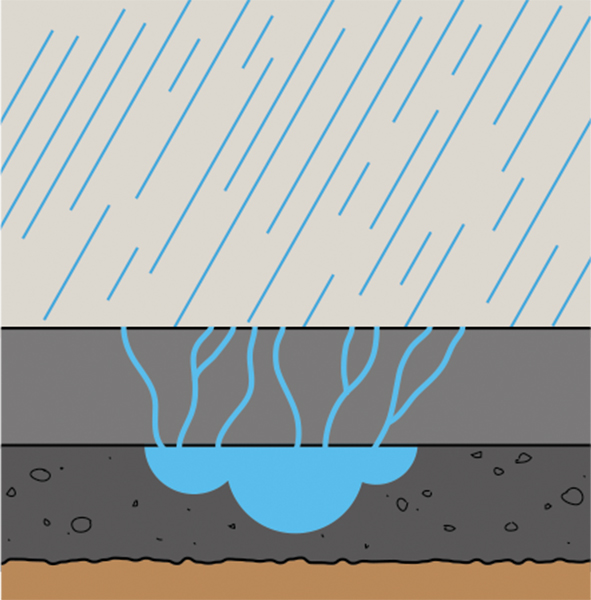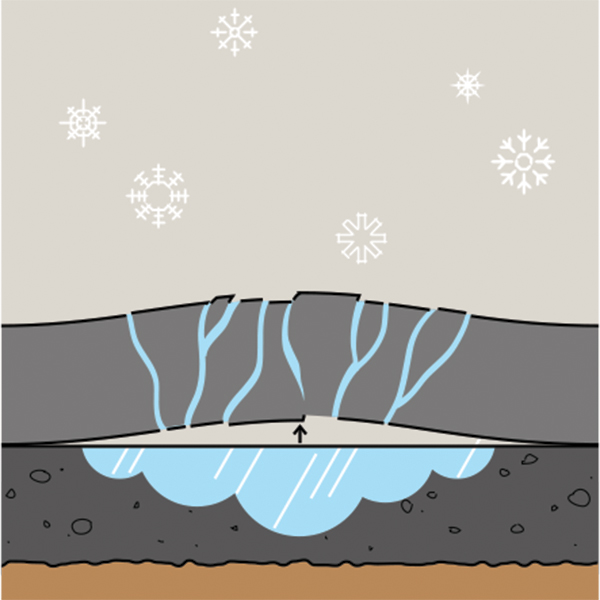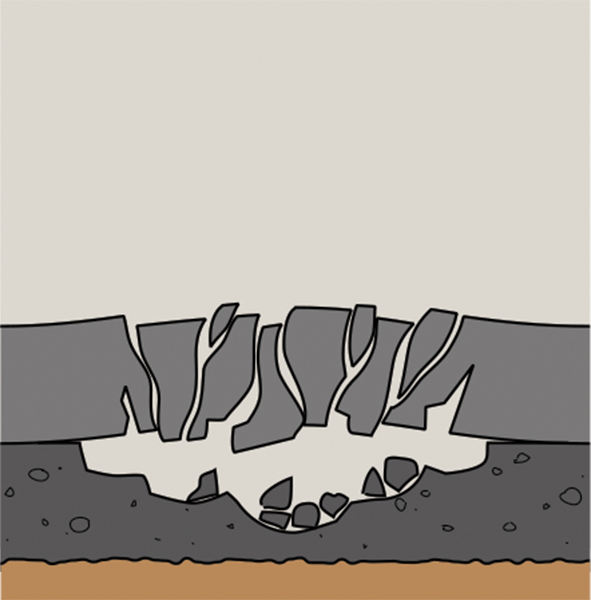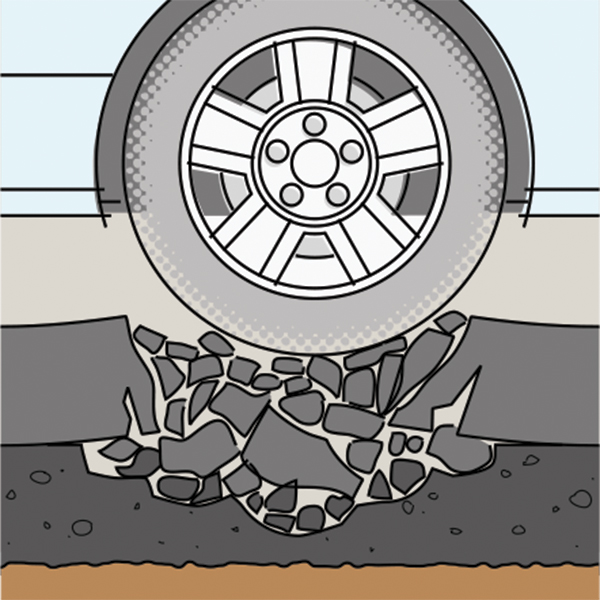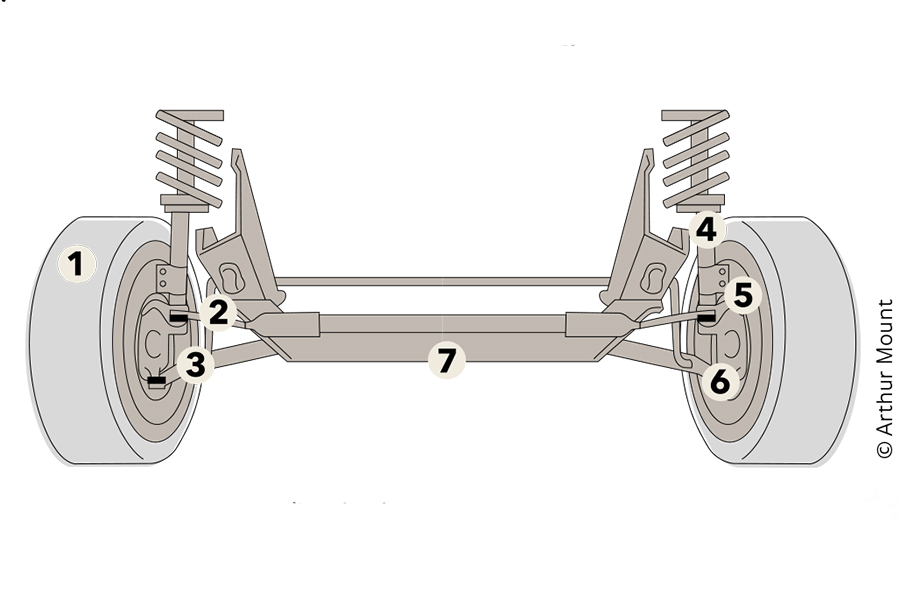All Things Automotive: The Hole Truth

Potholes can turn a smooth roadway into an obstacle course. These tips can help you understand, and minimize, the damage potholes can cause, as well as possibly avoid it altogether.
Birth of a Pothole
Water, winter temperatures, and vehicle traffic take a heavy toll on roads. Here’s how those elements team up to create a pothole:
Water from snow or rain seeps through small holes and cracks in the road, collecting between the asphalt and the roadbed directly below it.
When temperatures drop, the moisture freezes and expands, breaking up the pavement and separating it from the roadbed.
Rising temperatures then thaw the moisture, sometimes leaving a cavity between the pavement and the roadbed below it.
When a vehicle drives over the pavement, it begins to break down. Additional traffic causes more chunks to break away, expanding the hole.
Greatest Hits
Your vehicle can sustain serious damage from hitting a pothole. Here are some of the parts that are particularly vulnerable, with typical repair or replacement cost estimates for an average passenger car.
- Tire $100–$250 (includes mount and balance)
- Tie rod $100–$250
- Control arm $200–$400
- Shock/strut $200–$400
- Wheel $75 (steel) $500 (alloy)
- Ball joint $150–$300
- Wheel alignment $75–$150
Safe Travels
These tips can help you avoid or minimize pothole damage to your vehicle:
Inspect tires. Ensure tires are inflated to the recommended level and have deep enough tread. Underinflated or worn tires are more likely to become damaged, and they make your suspension and wheels more vulnerable.
Slow down. Hitting a pothole at a high speed greatly increases the likelihood of tire and wheel damage, but hard braking while hitting one can also cause damage if your vehicle “nosedives” into it. Let off the brakes immediately before impact so your suspension can take more of the force instead of the wheel and tire taking it all.
Watch out for puddles. It’s hard to know which puddles could be hiding potholes, so play it safe and avoid driving through them when you can.
Look ahead. An alert driver may be able to avoid potholes, so pay attention to the road. Watch the car in front of you; if you see it swerve or hit a pothole, you’ll know to adjust your path—but be aware of traffic and other surroundings before you swerve.
Damage Control
If, despite your best efforts, you were unable to avoid hitting a pothole, here’s what to do:
Have alignment and suspension inspected. If your car pulls to the side after hitting a pothole, a wheel may be out of alignment. Damage to struts, shock absorbers, and other parts can also affect the way your car drives. If you suspect problems, have a certified technician inspect the alignment and suspension.
Check your car. As soon as possible, inspect your car for damage. If you have a bent rim or tire damage, you may not notice it if you don’t look for it.
Listen for new noises or vibrations. New noises or vibrations usually indicate that something is wrong. If you notice them after hitting a pothole, have a certified technician look over the car.
AAA Connection
AAA can help you keep your car running at peak performance. As a member, you receive a 10 percent discount on labor (up to $50) for regular-priced services when you visit your local AAA Approved Auto Repair facility. Visit AAA.com/AutoRepair, to find a location near you.

